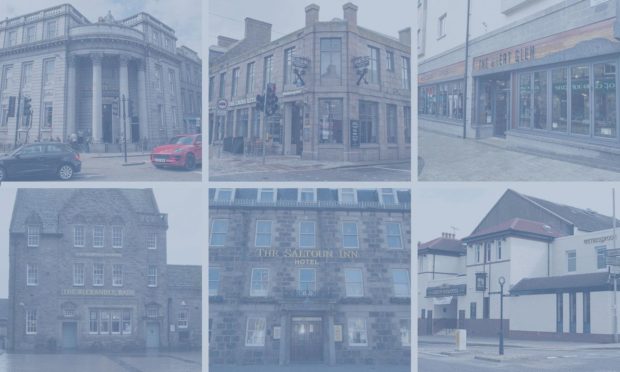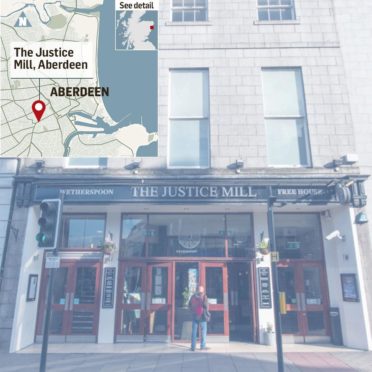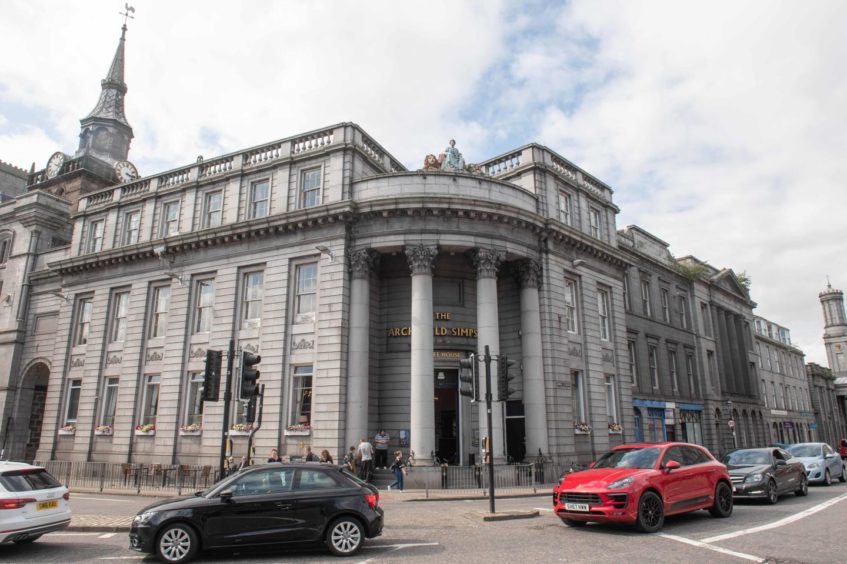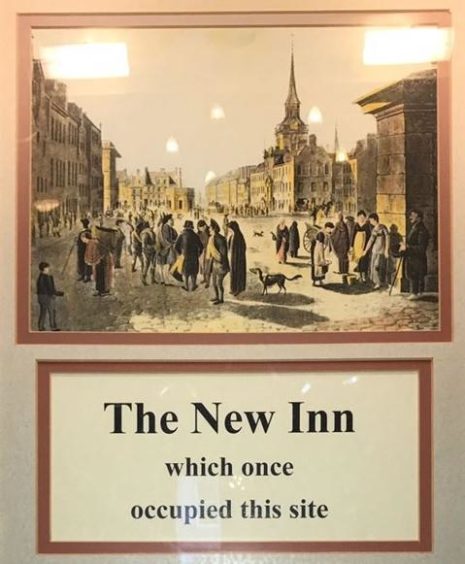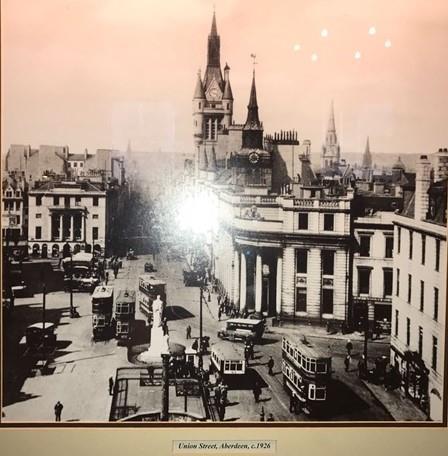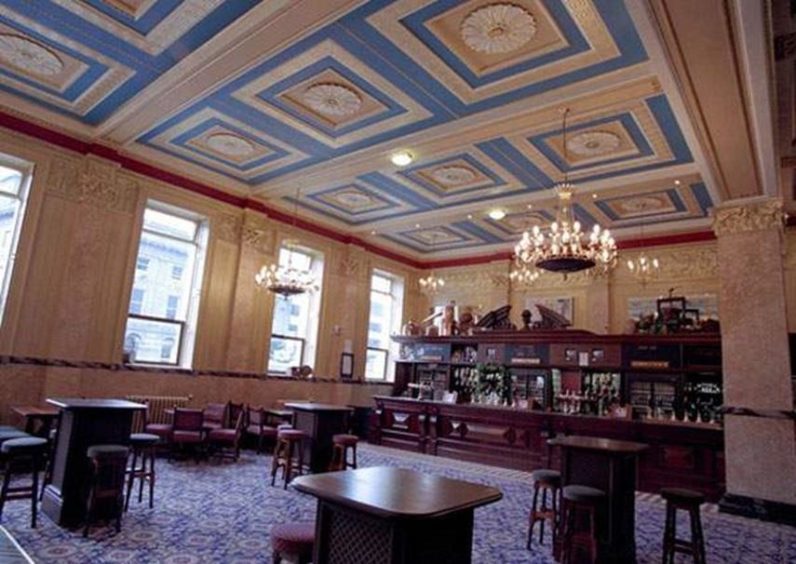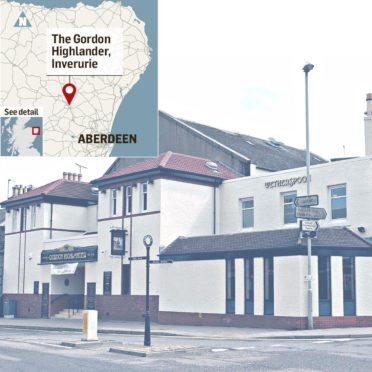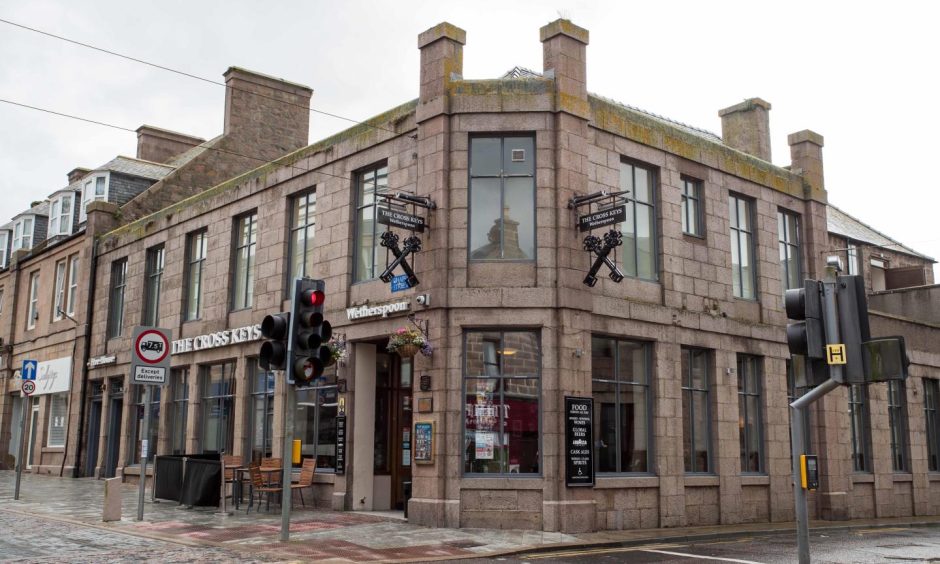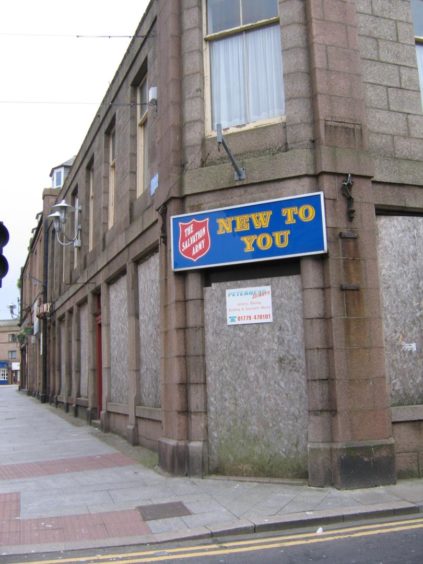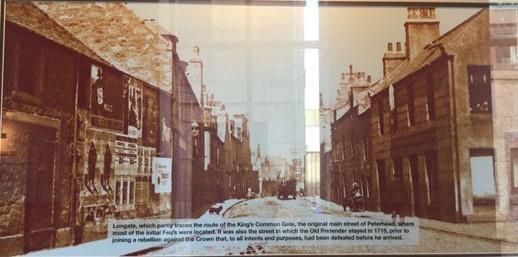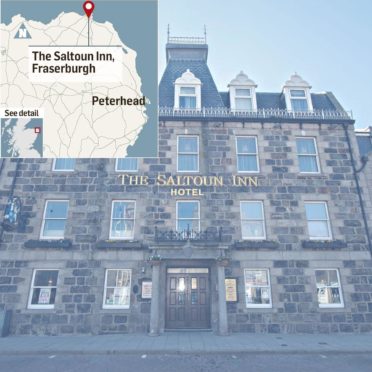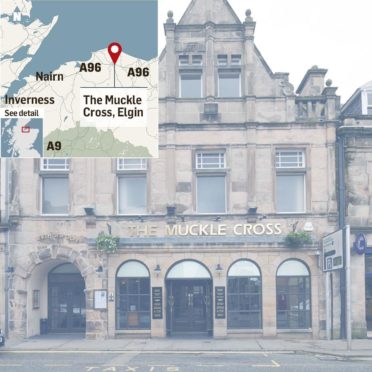JD Wetherspoon run some of the most popular pubs across the north-east – but do you know the history behind the buildings?
The company is known for re-purposing old buildings, from banks to cinemas, and incorporating their history into the pub’s name and design.
And local Wetherspoon locations are no exception with several of the buildings’ history going back hundreds of years.
The Justice Mill, Aberdeen
One of Aberdeen’s most popular pubs, The Justice Mill, was opened by JD Wetherspoon in 2004.
With an entrance on Union Street and Justice Mill Lane, the city-centre pub takes its name from two medieval mills which previously stood behind the building.
The Justiciar’s Mills, first mentioned in a charter in 1343, were driven by water from the Howe Burn which would later be known as Holburn. Aberdeen’s water supply also used to come from the reservoir in Water House opposite the now pub.
The Justice Mill occupies 423-425 Union Street which was developed alongside King Street in 1800 as part of an expansion of Aberdeen. It was named to commemorate the Union of Great Britain with Ireland in January 1801.
Construction of the major street involved raising its level with brick arches between Market Street and Union Bridge which remain largely hidden from view today.
Number 423 is a listed building dating from 1821 which was occupied by a costumer from the 1890s. It was then the location of an Aberdeen dressmaker before a tailor moved in between the 1920s and 1960s.
Number 425 was occupied by a fruit merchant for around 50 years and the building was home to an Edinburgh Woolen Mill before Wetherspoon moved in.
The Archibald Simpson, Aberdeen
The Archibald Simpson pub is located at 5 Castle Street in the Castlegate area of Aberdeen, just about one mile away from The Justice Mill.
The pub is name after its designer Archibald Simpson, known as the Architect of Aberdeen, who also designed Marischal College and St Andrews Cathedral.
The building is one of the city’s best-known landmarks with its eye-catching Corinthian columns and figure of goddess Ceres. It was previously home to the North of Scotland Bank, established by Sir Alexander Anderson in Broad Street, Aberdeen in 1836.
The foundations for the current building were laid in January 1840 after the former site of the New Inn pub, built in 1754, was demolished by the banking company.
The New Inn has several famous guests, including writer Dr Samuel Johnson and William Harvey who discovered the circulation of blood in 1642. Scottish poet Robert Burns also spent his only night in Aberdeen at the New Inn.
As well as being a popular hotel for 80 years, the building was the headquarters for the Aberdeen Lodge of Freemasons and became part of the Clydesdale Bank in 1950.
The Gordon Highlander, Inverurie
The Gordon Highlander pub on West High Street in Inverurie is named after the only surviving locomotive built by the Great North of Scotland Railway.
It was one of 10 locomotives built at the Inverurie Loco Works, which closed in 1969, and is now on display at the Scottish Railway Museum.
The name is also connected to the First Battalion of the Gordon Highlanders, who were the 51st (Highland) Infantry Division during the Second World War Battle of France in 1940.
A plaque on the side of the building shows that the building first opened its doors in 1934 as the Victoria cinema, closing more than 60 years later in 1998. The cinema featured an art deco auditorium with an arched ceiling and seating for up to 456 people.
It was just one of the cinemas designed by Thomas Scott Sutherland who was also the architect on more than 250 houses and 22 schools in Aberdeenshire. He trained at Robert Gordon’s College where the School of Architecture is now named after him.
The premises then became Oscars nightclub with a side bar named The Auld Vic before being refurbished by J D Wetherspoon in June 2011.
The Cross Keys, Peterhead
The Cross Keys pub is situated at the junction of Chapel Street and Back Street which once marked the farthest limit of the town. An episcopal chapel dedicated to St Peter was built on the site of the pub in 1747.
More recently, the pub building was a Salvation Army base and shop before JD Wetherspoon took over in 2007. The transformation was hit by several delays due to structural problems with the building.
The Saltoun Inn, Fraserburgh
The Saltoun Inn pub and hotel is in a three-story, grade B listed building that was built in 1801. It was part of the transformation of Saltoun Square, previously called Kirk Green, into a classical town centre.
The inn was funded by the gentlemen’s club, Gardeners’ Friendly Society of Fraserburgh, to become the focal point of local trade and commerce.
It was built by local mason Alexander Morrice in 1801 who incorporated fabric of the Fraser’s Town House which previously stood in the site.
Mr Morrice designed several buildings in Saltoun Square where regular large meetings were held, including religious assemblies of more than 1,000 people.
The site was named the Saltoun Arms Hotel until 2006 and was then refurbished by Wetherspoons which opened the pub and hotel in August 2014.
The pub has on display moments from the town’s history, including historical photographs of John Ross, a fierce opponent of slavery, and RNLI crew members who lost their lives on the job.
The Muckle Cross, Elgin
The Muckle Cross pub is situated on the High Street in Elgin and has gained association with a town monument which has been a listed building since 1982 due to its name.
It is named after a monument built in 1630, surmounted by a lion, which stood at the heart of Elgin in medieval times. It was built to replace a 14th century cross and was named to distinguish it from a smaller cross at the end of North College Street.
It was removed in 1792 as it was obstructing traffic but the B-listed monument was re-built in the 1880s with the original lion and was used as gathering point for proclamations, including the announcement of the Queen’s coronation.
For decades the engraved lettering and stone carving on the Muckle Cross were hidden under layers of soot, until a £45,000 restoration project was carried out in 2017.
